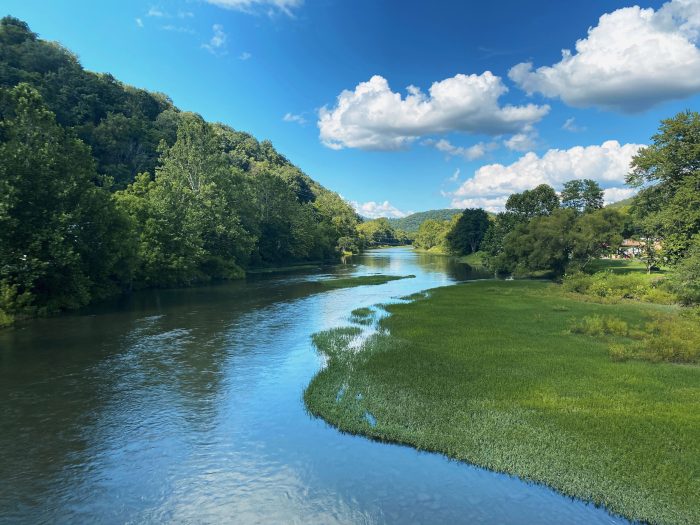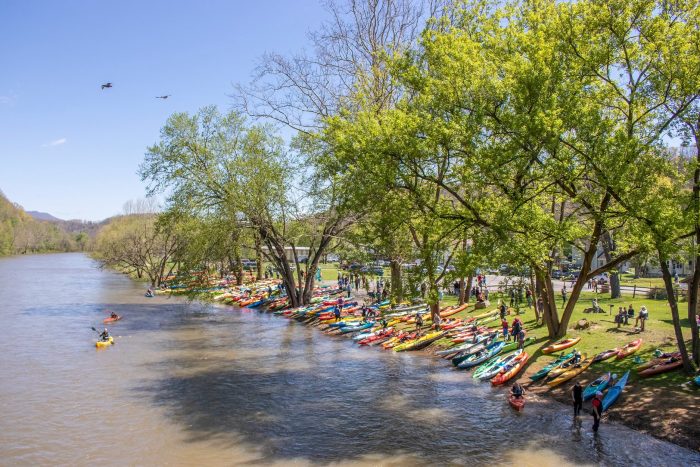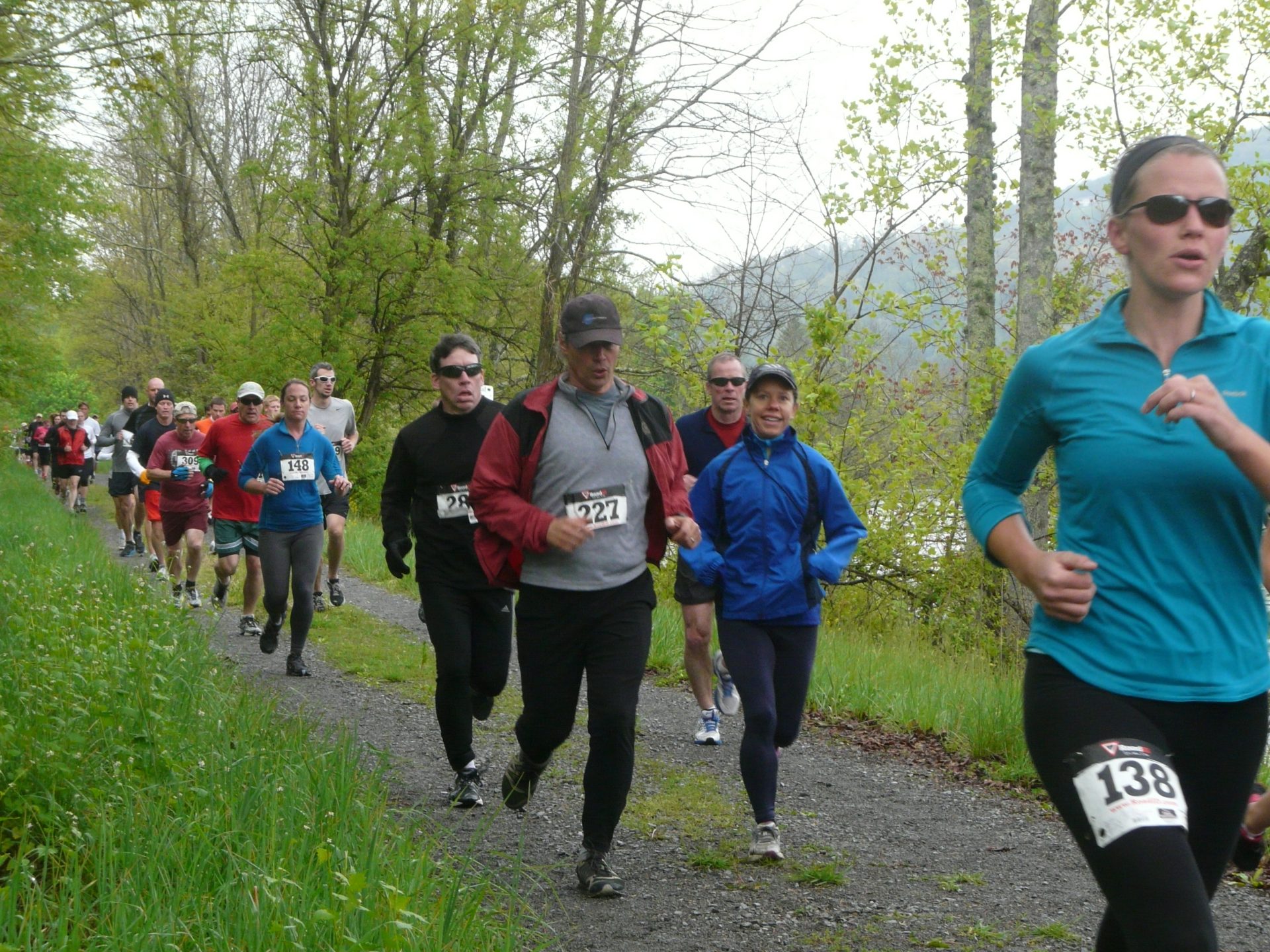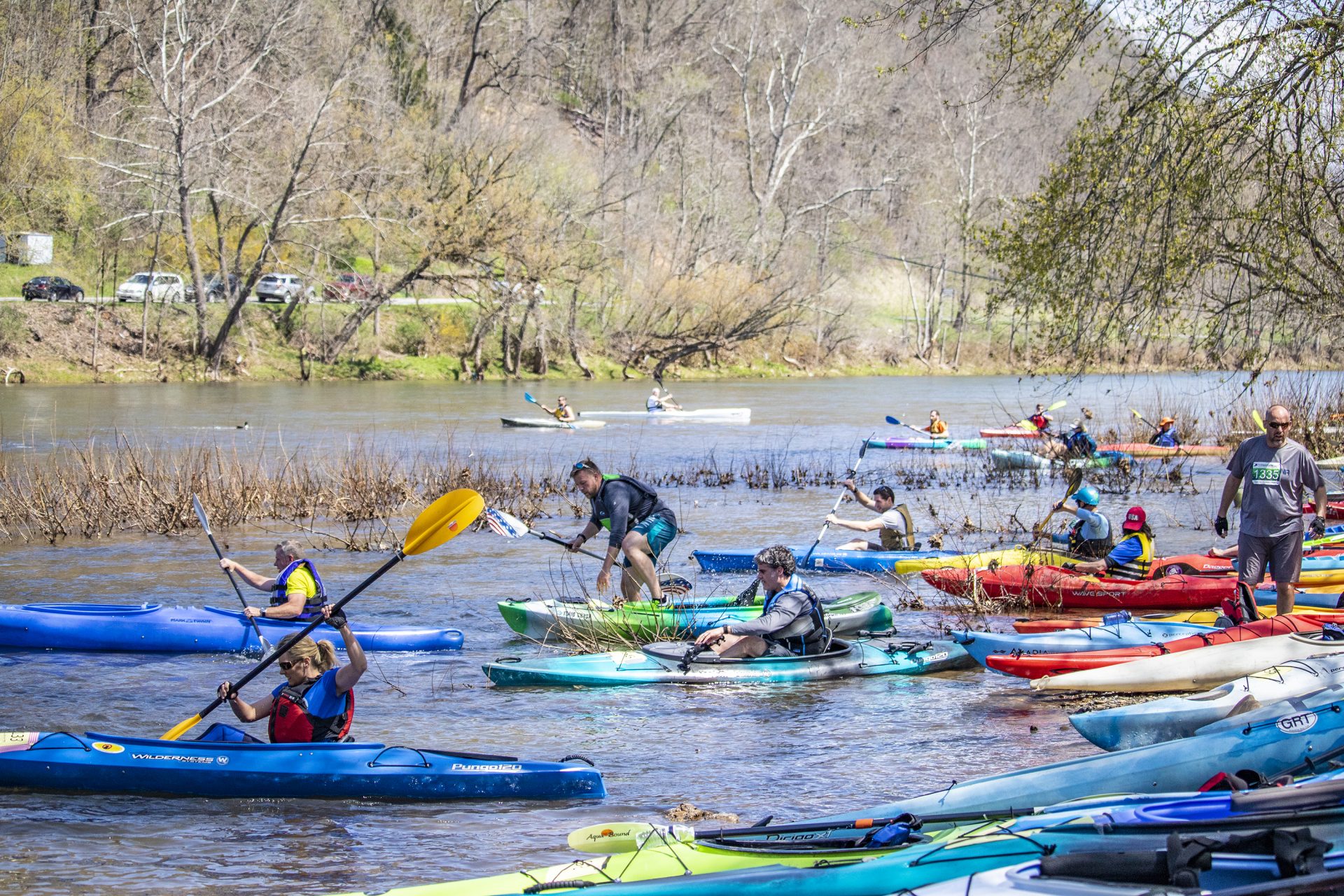The Power of Moving Forward — The History Behind the Great Greenbrier River Race
In 1842, Henry Wadsworth Longfellow penned the poem “The Rainy Day.” Written after the death of his first wife, the poem reveals a deep and personal look into Longfellow’s frame of mind during a time of great suffering and loss. The next to the last line of the poem perhaps sums up Longfellow’s feelings best and has been the most often quoted line of the piece, “Into each life some rain must fall.” For Longfellow, the use of the word rain undoubtedly was a metaphor for the loss of his wife and the ensuing feelings of bereavement and mourning he was experiencing. The power of the line stems from its truth. None of us are spared loss, hurt, or tragedy in this life. The storms will come, the rain will fall. It’s therefore not a question so much of if these things will come into our lives but, more so, how we choose to deal with them. We have the choice in life to either allow the rain to beat us down and define us, or to rise above the rain and move forward. And that’s the power behind the history of the Great Greenbrier River Race. Rising above adversity and tragedy and finding the power to move forward.
It’s rain that played a key factor in the origins of the Great Greenbrier River Race; rain, both as Longfellow used it, as well as rain in the tangible sense. In the fall of 1985, tropical storm Juan began slowly moving north from the Gulf of Mexico, inland to the U.S., leaving in its path a large amount of moisture over the Southeast. In no less than three days a second storm developed in southeastern Georgia and combined with the remaining moisture left in Juan’s wake. Within twenty-four hours heavy rains began to fall from western North Carolina to southern West Virginia. As the rainfall strengthened, the storm slowly moved northeast. Contributing further to the severity of the event, the circulation around the storm drew additional moisture from the Atlantic coast, resulting in heavy rains bombarding the Appalachian Mountains. Rainfall rates ranging from three to six inches within just a 12-hour period were recorded over the headwaters of multiple rivers; one of which was the Greenbrier River. Flooding was inevitable. In West Virginia, both the Cheat and Greenbrier Rivers crested at record levels, and sadly, the resulting floods claimed the lives of 47 West Virginians.


As fate would have it, a few years prior to the devastating flood of 1985, the Greenbrier River Trail was established. The river trail was born out of the vestiges and remains of a terminated Chesapeake and Ohio Railway line. After the abandoned tracks were removed in 1979 and the land was donated to the state of West Virginia, the remaining rail bed was converted to a rail-trail paralleling much of the Greenbrier River and thus, the Greenbrier River Trail was born. But as Longfellow so aptly noted, the rain will come. The rain (quite literally) in this case resulted in horrendous flooding, unleashing damage and destruction to the newly established and recently improved Greenbrier River Trail. Portions of the 78-mile-long trail were simply washed away. Fortunately, there were those that chose to bravely move forward. The Greenbrier River Trail was too important to be lost. A fundraiser was conceived that would both celebrate and utilize the Greenbrier River Trail — an event designed to promote the use of the unique rail trail, while simultaneously raising funds for the ongoing maintenance of that trail. And in 1986, the first Great Greenbrier River Race was held, with proceeds from the race going towards the continual upkeep of the Greenbrier River Trail.


For over thirty years now the Great Greenbrier River Race has been a West Virginia triathlon favorite. What is a triathlon you ask? Well, a triathlon is a multisport endurance race, typically consisting of swimming, cycling, and running, covering various distances for each segment of the race, with the triathletes competing for the fastest completion time in the overall race. In the case of the Great Greenbrier River Race, the swimming portion of the event is exchanged for kayaking or canoeing on the Greenbrier River (so leave those swimming goggles at home). Now, your next question may be, “How long are triathlons?” The triathlon distances for the Great Greenbrier River Race break down as follows: three miles of running, four miles of paddling, and ten miles of biking. And one of the things that make this race so distinctive is the feeling of celebration and connection between the paralleling Greenbrier River and the Greenbrier River Trail. That’s because, apart from the starting and finishing line on 8th street in Marlinton, the course of the race is divided between paddling on the Greenbrier River and running and biking on the Greenbrier River Trail. Don’t let the irony of that escape you. The very river that flooded and wreaked havoc on the Greenbrier River Trail within a few years of its inception, now unites with it (for over thirty years, mind you) to be part of one of the most anticipated races in West Virginia. How cool is that?
Over the years the Great Greenbrier River Race has grown to become a celebration of good-natured competition in a family-friendly environment. Teams of two to four participants, as well as solo racers, have been taking part in the triathlon for more than three decades and the Pocahontas County race has had as many as 400 participants at one time. Slated for the last Saturday in April, racers have competed, rain or shine, with some even having to dodge snowflakes during the event. For those not racing but coming along to support a racing family member or friend, the race’s host town of Marlinton offers shops, dining, and an art gallery to fill the day while your triathlete is competing. The race truly offers fun for both competitors and spectators.
I think once you know the history behind the race, it makes attending the event all that more meaningful. And knowing the proceeds of the race go toward ensuring the Greenbrier River Trail will be well taken care of for generations to come, allows each of us to be part of the trail’s ongoing history as well. This year’s Great Greenbrier River Race is set for April 30, 2022, and is already shaping up to be a fantastic kick-off to another epic summer season in Nature’s Mountain Playground. So, if you’re already looking to do some kayaking in West Virginia why not combine that with a spring run? Throw in a triathlon bike (or any bike you’ve got) and come join us in Pocahontas County for the Great Greenbrier River Race. Visit this website for further details and online registration.
